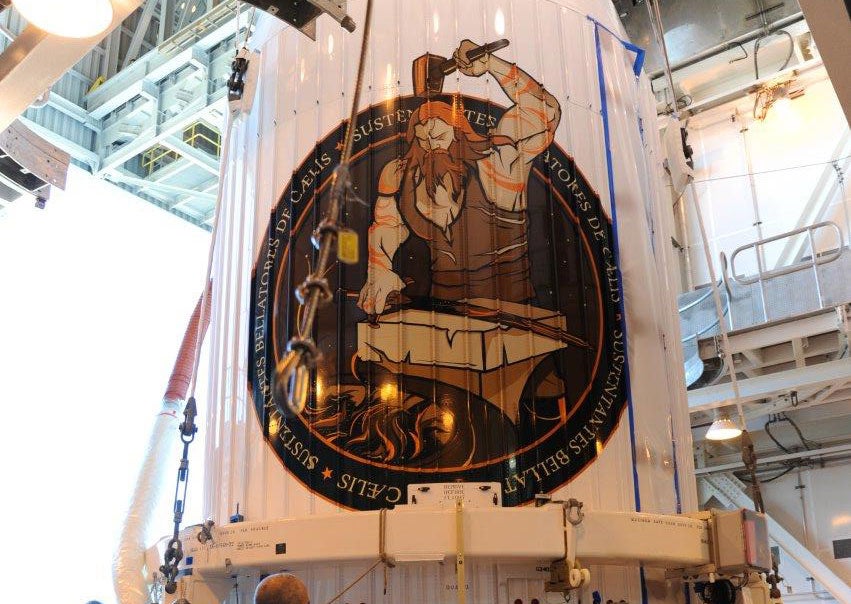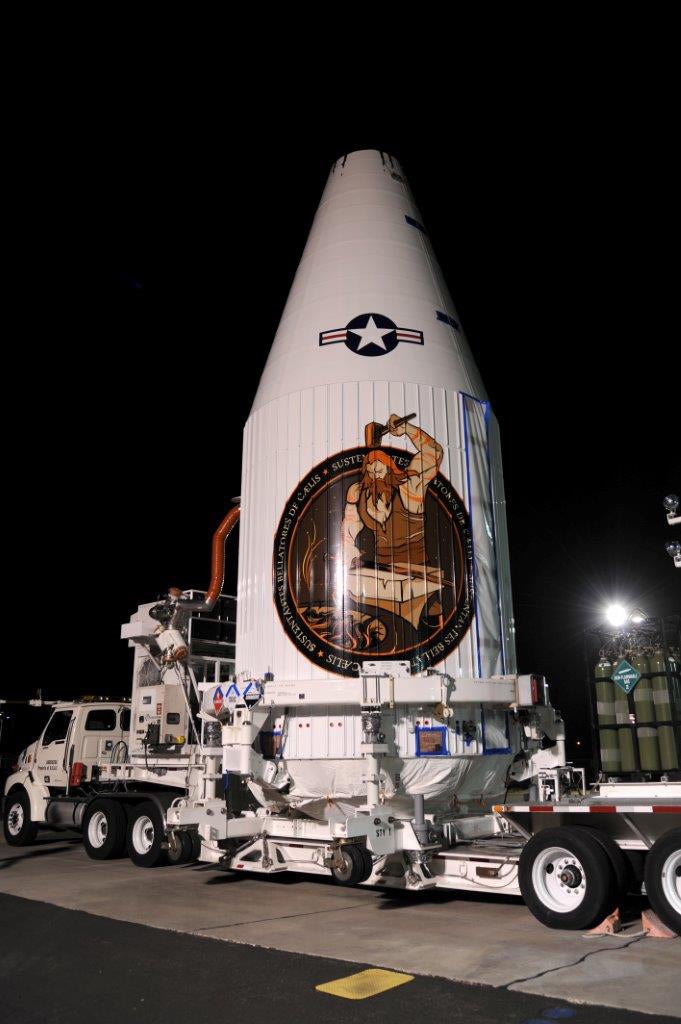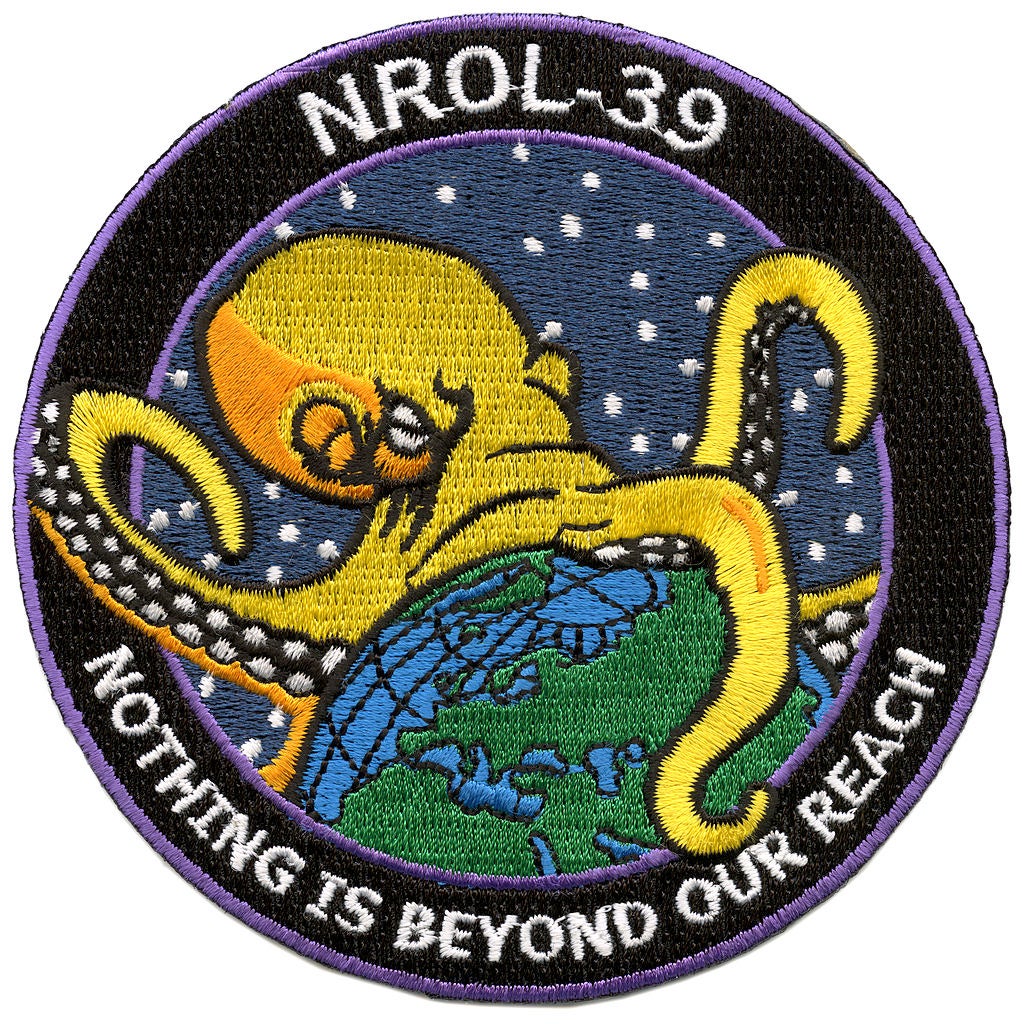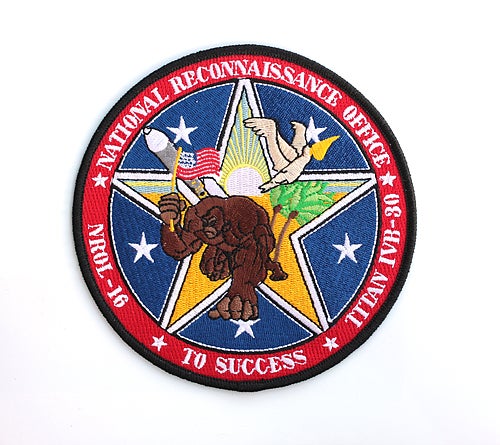America launches NROL-55 spy satellite rocket with an amazing Viking logo
America's National Reconnaissance Office is known for its over-the-top and outlandish mission logos

Your support helps us to tell the story
From reproductive rights to climate change to Big Tech, The Independent is on the ground when the story is developing. Whether it's investigating the financials of Elon Musk's pro-Trump PAC or producing our latest documentary, 'The A Word', which shines a light on the American women fighting for reproductive rights, we know how important it is to parse out the facts from the messaging.
At such a critical moment in US history, we need reporters on the ground. Your donation allows us to keep sending journalists to speak to both sides of the story.
The Independent is trusted by Americans across the entire political spectrum. And unlike many other quality news outlets, we choose not to lock Americans out of our reporting and analysis with paywalls. We believe quality journalism should be available to everyone, paid for by those who can afford it.
Your support makes all the difference.The United Launch Alliance (ULA), an American company which provides spacecraft launch services to the US Government, has today launched a rocket carrying a payload of classified government spy satellites - using a rocket emblazoned with possibly the coolest logo ever.
The NROL-55 mission began without a hitch, as the ULA Atlas V rocket took off from Vandenberg Air Force Base in California on the morning of 8 October.
The rocket is carrying a bulky and highly classified payload for the National Reconnaissance Office (NRO), an American governmental intelligence agency which designs, builds and operates the country's network of spy satellites.
Due to the agency's secrecy, we don't know much about the main NRO satellite. However, Space Flight Insider reports the rocket is also carrying 13 tiny CubeSat satellites, for the use of the NRO and other government agencies.

Judging by the mission logo that the NRO emblazoned on the side of the rocket, it's clear they're not satisfied with the significant amount of street cred that comes with building and operating a network of secret satellites.
The logo shows a huge, tatooed Viking with long red hair and a bushy beard, hammering away at a stone anvil next to a burning furnace.
Around the picture of the imposing warrior, it says 'sustentantes bellatores de caelis,' Latin for 'we are supporting the warriors, from our place in the sky'.
The logo is certainly imposing and over-the-top, but these quirky mission 'patches' are something of a hobby for the NRO.
As reported by Smithsonian, the NRO's kitschy patches were a secret during the Cold War, and went generally unnoticed by the public even as the cloak-and-dagger agency became more open.
The patches became famous, however, after an amateur satellite-watcher examined a mission patch and theorised that a dark shape pictured on the patch represented a failed satellite, that the new satellite launched in the mission would replace.

He watched the skies, and as he expected, the new satellite started orbiting where he thought it would, based on the predictions he made from the mission patch.
Space historian and writer Robert Pearlman discovered this and approached the NRO, asking if they had really just given away details of a classified spy satellite mission through the design of a publicly-available mission patch.

The NRO asked him not to publish the story, but he went ahead, after an NRO spokesman had told him that the bizarre patches were just morale-boosters for members of the team who designed them.
The story broke and the NRO's mission patches became known to a much wider audience - but if anything, the agency's new-found fame encouraged them to make the patches even more ridiculous.

Previous NRO mission patch designs include a crudely-drawn cartoon bear, a dragon with American flags for wings holding the Earth in its talons, and a giant yellow octopus enveloping the globe, surrounded by the words, 'NOTHING IS BEYOND OUR REACH'.
It may seem unusual to stick a 3-metre high image of a red-headed Viking blacksmith on the side of your classified spy rocket, but after more than 50 years, it's become a tradition for the NRO.
Join our commenting forum
Join thought-provoking conversations, follow other Independent readers and see their replies
Comments